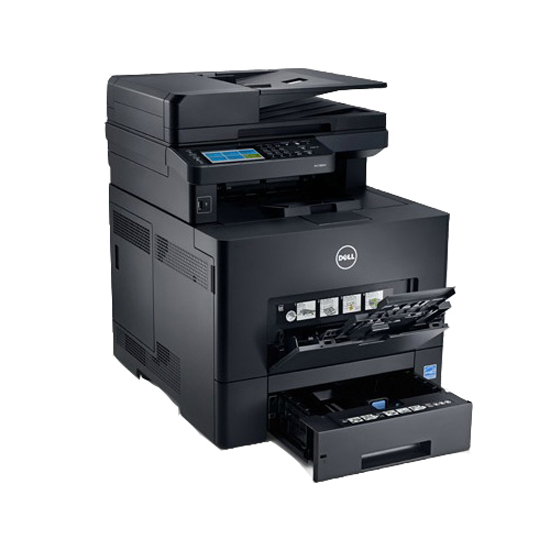Initially you wouldn’t notice too many physical differences between the two machines as they have identical dimensions: a matte black, square-shaped 558 x 439 x 530mm weighing in at a solid 32.6kg. See also Group test: what’s the best multifunction printer? You still have the full MFP set of print, copy, fax and scan with the same 50-sheet Duplex Automatic Document Feeder at the summit, the 150-sheet multi-purpose tray at the front and the basic 250-sheet input tray at the base. This can be further enhanced with an optional 550-sheet tray if you need the extra capacity. It might have been expected that the C2665dnf might have include Wi-Fi as standard this time but disappointingly you’ll again have to pay extra for the adaptor kit. USB 2.0 and Ethernet are of course included, though you will have to supply your own leads. So where are the innovations? Well for a start the memory and processor capacity has been doubled to 1GB clocked at 1066MHz and the 4.3-inch touchscreen display has been given a dynamic interface overhaul with swipe gestures now included and colours brightened. However the unique selling point for the C2665dnf is integration with the new Dell Document Hub which enables you to access and search multiple cloud storage services (such as Dropbox, Google Drive and Microsoft SkyDrive) simultaneously as well as print off Microsoft Office and Google documents. Currently, Dell is offering this service and cloud Optical Character Recognition for free until the end of March 2014 – it remains to see how popular it will be after they start charging. On the far right of the control panel is an NFC logo which allows you to ‘tap and print’ Windows 8.1 Near Field Communication devices such as smart phones and tablets. The C2665dnf is AirPrint compatible and a separate USB port below the control panel provides opportunities for saving to flash drives. Print speeds are not at the dizzying levels of the C3765dnf but the C2665dnf is certainly no slouch. The claimed 27ppm for both colour and black text pages proved accurate in practice, with duplex versions managing a more than respectable 16ppm. What was also impressive was the degree of accuracy and fine definition in copies of colour images and illustrations. Colour photos, on the other hand, had distinctly warmer tones than the original and copies emerged paler with occasional banding issues. The three colour cartridges can be purchased in 1200 page (i.e. 4.9p per page each) or 4000 page (3.63p per page) sizes, while the black ink comes in 3000 page (2.56p per page) and 6000 page varieties (2.06p per page), which is especially attractive if your main focus is on text documents.
